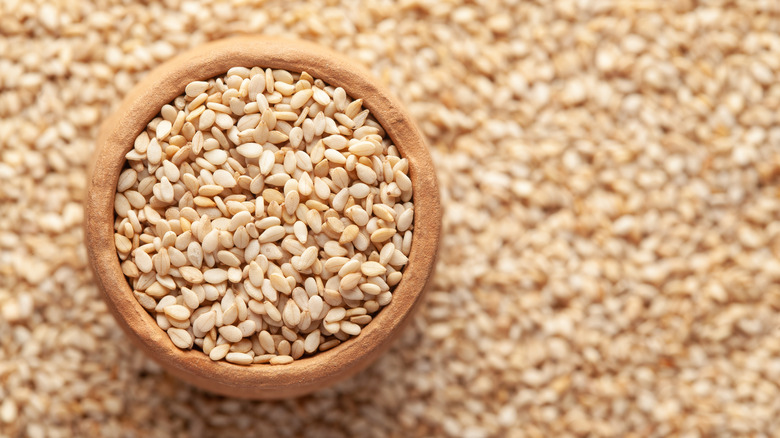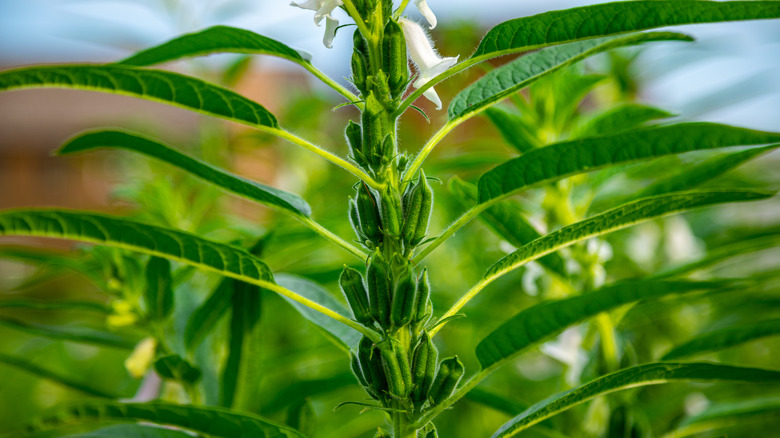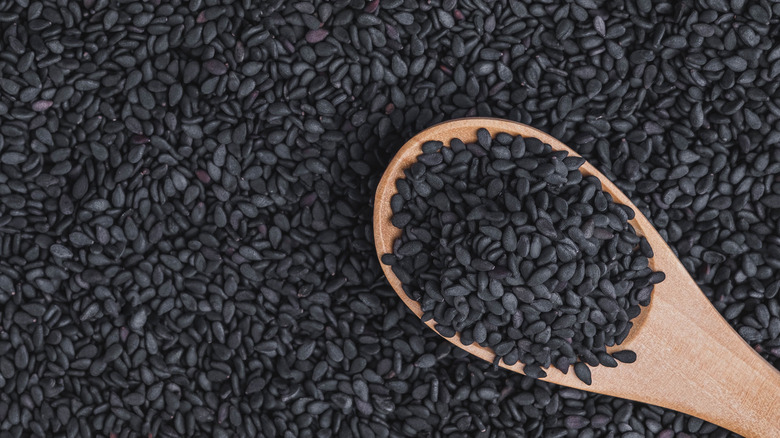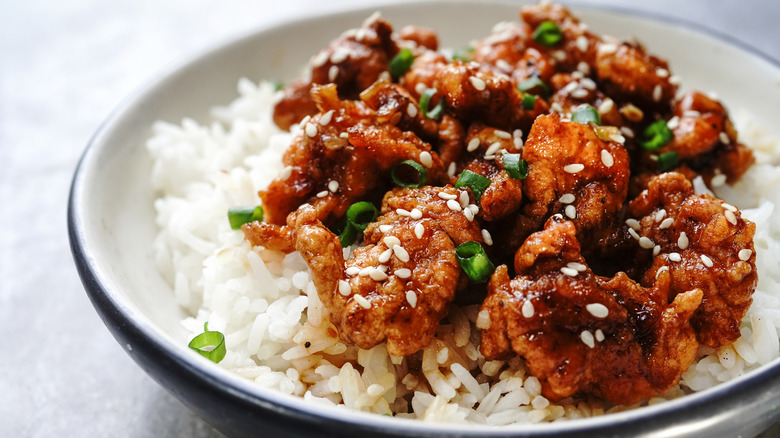Most Of The World's Sesame Seeds Come From This Country
Most Americans may only think of sesame as the seeds that top their bagels or hamburger buns, but in other parts of the world, these miniscule seeds are used in a wide variety of different dishes such as tahini and sesame-laced stir fry.
According to MasterClass, they're actually the oldest oilseed crop in the world. The seeds are often harvested by hand, which makes gathering enough to produce the flavorful oil a pricey endeavor. The Spruce points out that the word "sesame" actually derives from Latin, Greek, and Semitic words meaning "oil" or '"liquid fat" and much of the world's sesame oil is produced by Myanmar. The Woks of Life adds that it has become so synonymous with the flavor of Asian dishes, that just adding a drop of the fragrant oil can give stir fry dishes a more authentic feel.
Britanica says that sesame seeds come from the sesame plant or Sesamum Indicum. And, as The Spruce explains, this plant often thrives in very hot, dry conditions, which makes growing them a challenge for aspiring sesame farmers in cooler or more humid environments.
Sudan tops the world's sesame seed producers
Because of the sesame plants' highly specific climate needs, it doesn't thrive everywhere, but one place that sesame growth has excelled above the rest is Sudan. The Food and Agriculture Organization of the United Nations reports that this Saharan-African nation is the world's largest producer of sesame seeds throughout the globe. On average, Sudan produces more than 832,000 tons of sesame seeds every year, outranking the second-best producer, India, by nearly 100,000 tons.
Selina Wamucii notes that the majority of the crop is grown in the southeastern region of Gedarif. This thriving industry has only been around for a short time, with the sesame plant originally introduced to Sudan by the British in 1944. Taste of South Sudan adds that sesame seeds are now used in Sudanese dishes like Basico and Halawa Simsim, a type of sesame candy.
Britanica points out that sesame is likely native to the region of East Africa, though it may have come from Asia as well. There is evidence that ancient Egyptians used the grain for flour. The Chinese have also used the soot from burning the oil to make ink blocks for centuries. Sesame was considered so valuable in the middle ages, that it was worth as much as gold.
The mythical sesame seed
Sesame now plays a huge role in the Sudanese economy, but it has long played a role in myth and legend as well. The most widely known instance of this is the phrase "open sesame" from "Ali Baba and the Forty Thieves", per Sesanood. This was included as the password to a den of treasure due to the sesame pods' tendency to pop open easily when dried. In ancient Mesopotamia, sesame plants were viewed as a crop of the gods which possessed mystical power and strength.
This is Amber adds that sesame seeds were a symbol of immortality in many early Hindu legends. Sesanood says that this lines up with the Chinese perspective on the seed as well. Sesame was well regarded for its longevity-granting properties. There is even a Chinese tale about two men who believed they spent six months in the mountains eating sesame rice to find that seven generations had passed when they returned to their village.
How to cook with sesame
There are tons of great ways to cook using sesame oil. The rich, nutty flavor of the oil lends itself well to dipping sauces and dressings. MasterClass advises using the oil in smaller amounts when frying or sautéing. It says that its strong flavor can overpower some foods. Instead it should be cut with other less stable oils to lend a punch of flavor without dominating the dish. It also helps to know the difference between regular and toasted sesame oils. Light sesame oil has a high smoke point that makes it well suited to cooking over high heat, but the darker, toasted sesame oil is not as sturdy and should be reserved for sauces and dressings instead.
The South China Morning Post recommends using whole sesame seeds to add punches of color and flavor to simple dishes. They also make a great addition to spice mixes like furikake. MasterClass also says they can be used to add texture to rice, smoothies, or yogurt, or to cover the outside of breads and cakes, and add a satisfying, nutty crunch.



